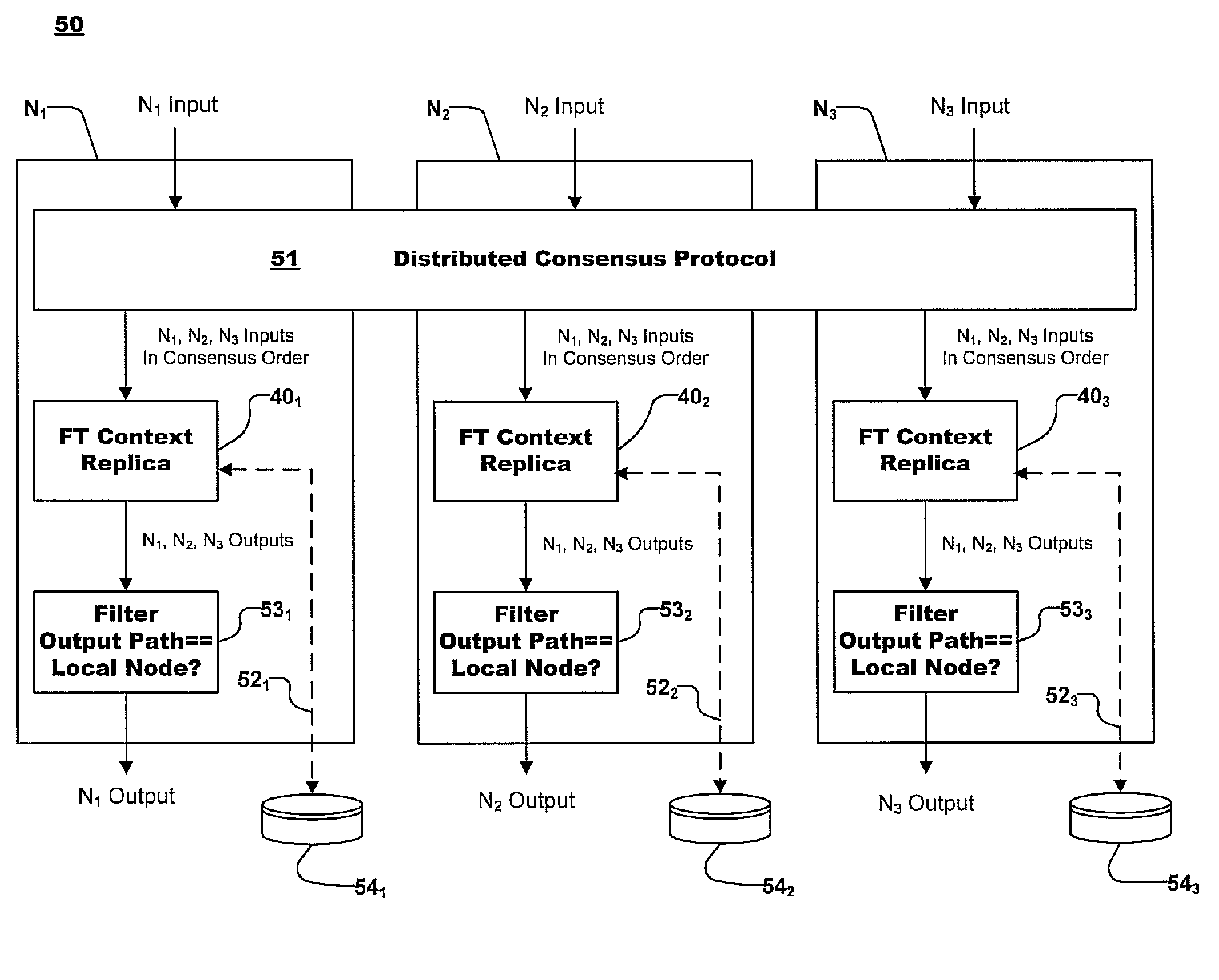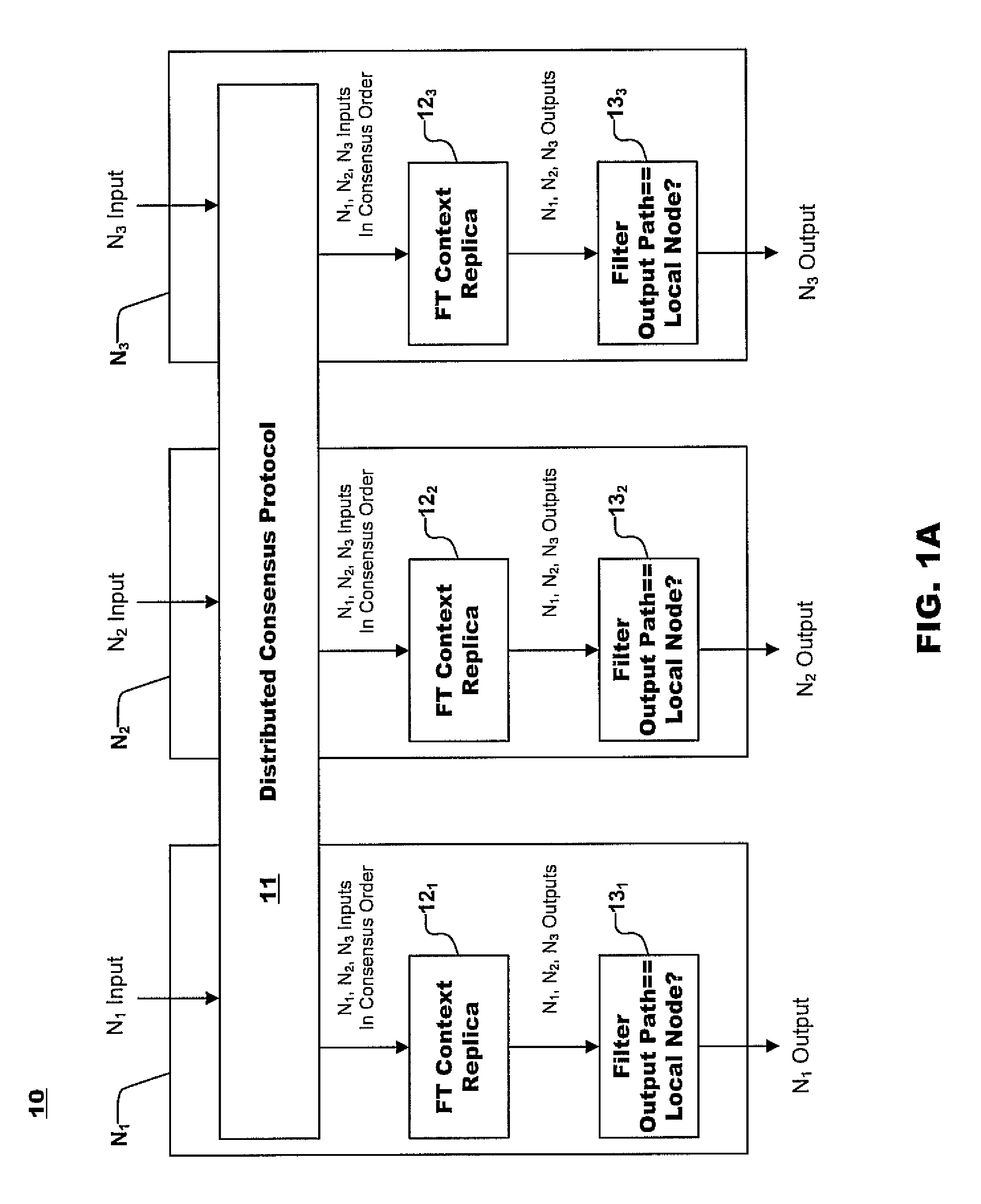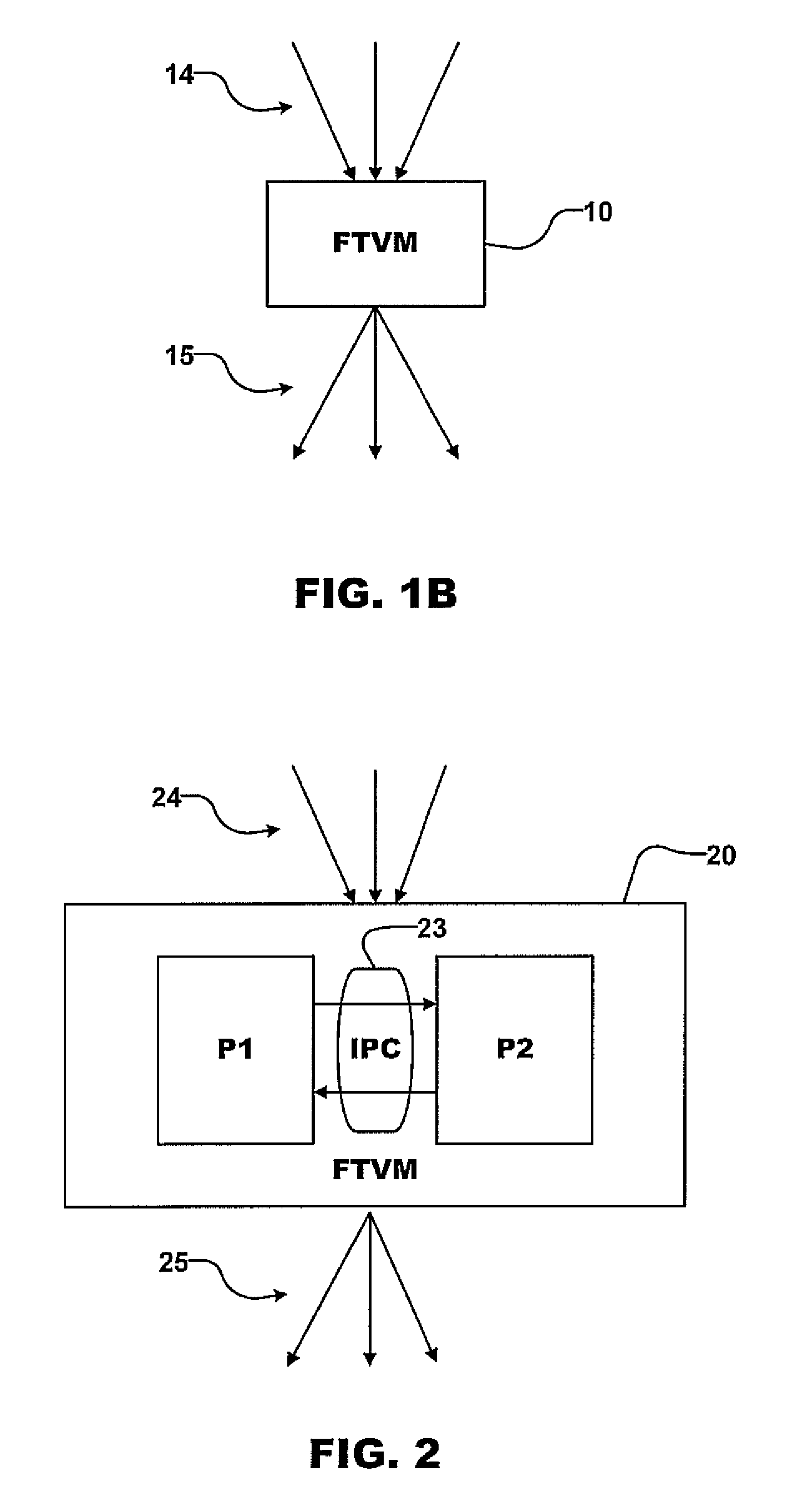Systems and methods for implementing fault tolerant data processing services
a data processing and fault technology, applied in the field of systems and methods for implementing fault tolerant data processing services, can solve the problems of significant communication latency in the critical path for database transaction execution, certain performance disadvantages associated with conventional frameworks for replicated database systems, and significant overhead associated with inter-node communication latency between database and storage servers. achieve the effect of eliminating the associated latency, and reducing the latency of the database server
- Summary
- Abstract
- Description
- Claims
- Application Information
AI Technical Summary
Benefits of technology
Problems solved by technology
Method used
Image
Examples
Embodiment Construction
[0017]Exemplary embodiments of systems and methods for providing fault tolerant data processing systems will now be discussed in further detail with reference to the Figures. In general, fault tolerant data processing services according to exemplary embodiments of the invention are implemented using active replication fault tolerant frameworks in which a data access service (e.g., database server) and a data storage service (storage server) in each replica are run as isolated processes co-located within the same replicated fault tolerant context. FIGS. 1A and 1B are high-level block diagrams of fault tolerant computing systems having an active replication based framework in which exemplary embodiments of fault tolerant data processing services according to exemplary embodiments may be implemented as discussed in further detail hereafter.
[0018]Referring initially to FIG. 1A, a computing system (10) is shown which comprises a cluster of computing nodes N1, N2 and N3 that serve as inde...
PUM
 Login to View More
Login to View More Abstract
Description
Claims
Application Information
 Login to View More
Login to View More - R&D
- Intellectual Property
- Life Sciences
- Materials
- Tech Scout
- Unparalleled Data Quality
- Higher Quality Content
- 60% Fewer Hallucinations
Browse by: Latest US Patents, China's latest patents, Technical Efficacy Thesaurus, Application Domain, Technology Topic, Popular Technical Reports.
© 2025 PatSnap. All rights reserved.Legal|Privacy policy|Modern Slavery Act Transparency Statement|Sitemap|About US| Contact US: help@patsnap.com



